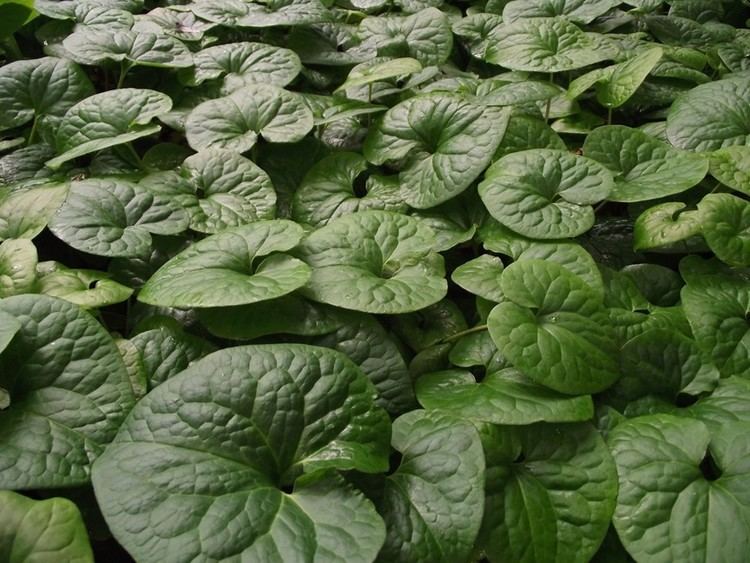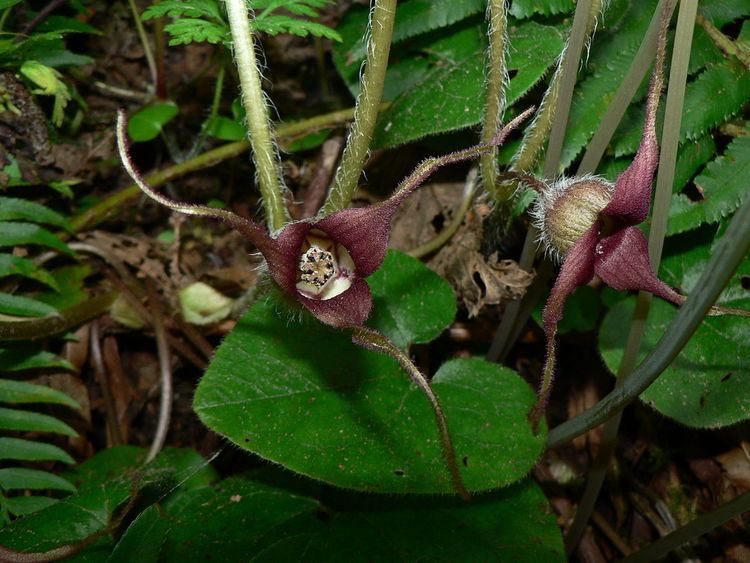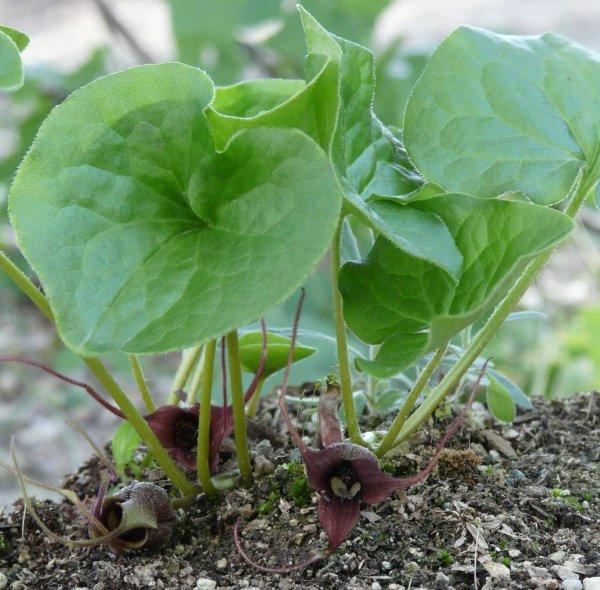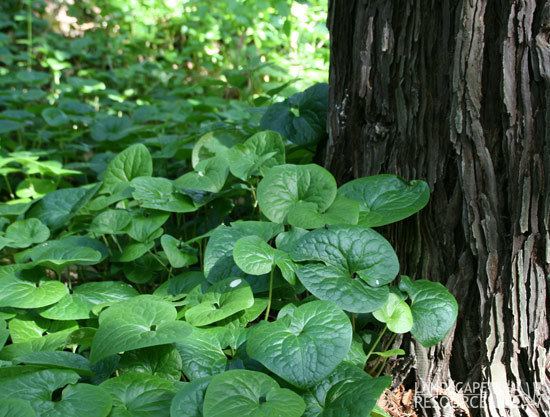Rank Species | Genus Asarum | |
 | ||
Similar Wild ginger, Asarum canadense, Aristolochiaceae, Chinese Wild Ginger, Asarum maximum | ||
Wild ginger or asarum caudatum
Asarum caudatum (British Columbia wild ginger, western wild ginger, or long-tailed wild ginger) is native to rich moist forests of western North America from British Columbia to California and as far east as western Montana. It an evergreen with flowers that develop from March to August. The flowers are distinct, hirsute (hairy), cup-shaped, and brown-purple to green-yellow which terminate in three, long, gracefully curved lobes, often concealed by leaves. The long rhizomes give rise to persistent reniform (kidney/heart shaped) leaves. Leaves are found in colonies or clusters as the rhizome spreads, forming mats. The leaves emit a ginger aroma when rubbed.
Contents
- Wild ginger or asarum caudatum
- Asarum caudatum
- Etymology
- Ecology and distribution
- Other uses
- Conservation
- References

Asarum caudatum
Etymology
Caudatum comes from the Latin cauda meaning tail. This refers to the tail-like shape of the flower's calyx.
Ecology and distribution

Asarum caudatum is found in British Columbia, Washington, Oregon, Northern California, Idaho, and Montana in moist, shaded environments. It is a typical herb found in the understory of mixed conifer forests under 2,200 feet in elevation, and is often a dominant plant. It reproduces rhizomatously, meaning many mats are formed by one clonal plant connected by a rhizome. A. caudatum can also reproduce sexually, with its seeds dispersed by ants. Their flowers are pollinated by flies. However, cross-pollination is rare. Ants are attracted by a fatty appendage attached to the seed.

The ants carry the entire package back to their colonies. The seed is often dropped outside the nest once the ant realizes only the appendage is edible. Due to the costs of producing seeds with an appendage to attract ants, it is more energetically favorable for the plant to reproduce rhizomatously.
Other uses

Some describe using A. caudatum as a ginger substitute and as a tea with medicinal properties. Members of the family Aristolochiaceae contain aristolochic acid, which has been recognized as a carcinogen. In a study on its effects on fungus, A. caudatum had antifungal properties when tested against nine fungal species.
Conservation

Asarum caudatum is not listed a species of concern. However, the habitat in which it is native is threatened in some regions by logging and other land uses.

